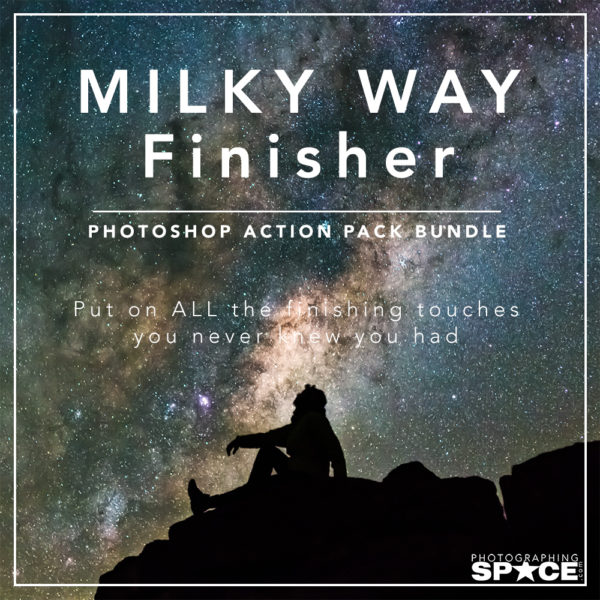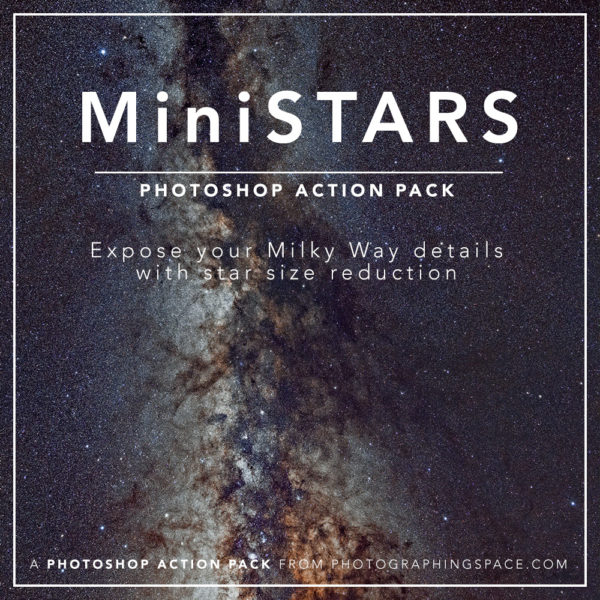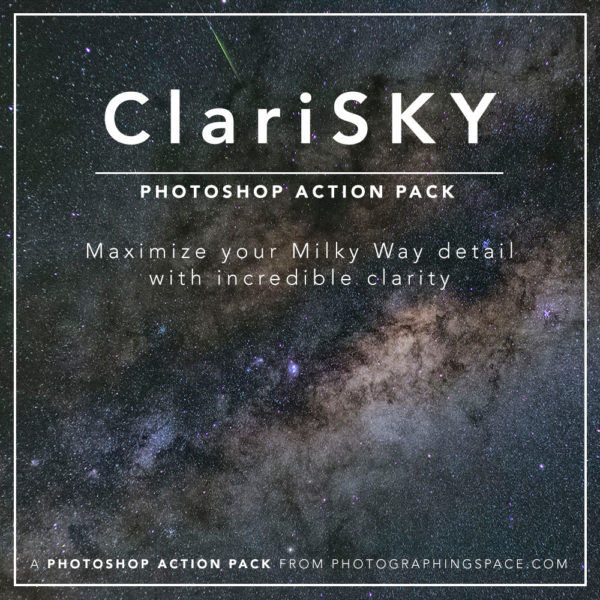Don’t let condensation ruin your astrophotography!
I was recently reminded of the common problem of dew on your lens ruining an astrophotography shoot. Usually, where I shoot, the conditions don’t cause an issue with condensation on my lenses, but sometimes, just often enough to catch me off guard, it does, and my night of AP is wrecked by blurry and faded-out images — especially when I’m shooting time lapse and star trails.
Tanja, our friend Brendon Wainwright, and I were shooting star trails sequences right next to each other. Brendon was using a Nikon 20mm f/1.8 lens, Tanja used a Canon 24-70mm f/2.8, and I was shooting with the Canon nifty fifty 50mm f/1.8. None of us felt the humidity in the air, and we left our cameras out shooting and took a nap.
A few hours later we woke to check our cameras, and much to his dismay Brendon had gotten only about 5 exposures out of the hundreds that were shot before the lens fogged over with dew. Both Tanja’s and my lenses were perfectly dew-free. We made a few jokes about it maybe being a “Nikon problem” because Tanja and I shoot with Canon, and that’s when Brendon admitted he had forgotten his lens hood. Protecting your shoots from fogged-over ruin is sometimes as simple as that.

Why does lens condensation happen?
Condensation, dewing or fogging up of camera or telescope lenses, happens because the glass of the lens is colder than the air around the lens. That’s not enough, though. There also has to be some humidity in the air.
In physics terms, it is the change in the gaseous form of water in the air, as water vapor, to liquid water. Gases are warmer than liquids, so if the water vapor in the air hangs around the glass of the camera lens, which is a better thermal conductor than air, it will cause the heat to be removed from air making contact with the lens, and turn the gaseous-state water vapor into tiny droplets of liquid water, which cling to the lens and wreck everything for us!
How do we keep the dew away?
Lens hoods
Lens hoods (like these) are the most practical and quick way to keep dew at bay. Most people already have them, so if you do just make sure you use them in all cases.
Having the lens objective glass recessed helps to protect it from the outside colder air just a little longer. For obvious reasons lens hoods aren’t viable on ultra-wide lenses, so you’re somewhat limited.
Pros:
Cheap (sometimes)
No power required
They make you look like a pro
Cons:
They only work in low-humidity
They don’t work as long as other methods
They work best on longer-focal length lenses
Hand warmers

One step better than a lens hood that also takes no power (a big plus), is wrapping a couple of hand warmers (like this) around the lens hood or directly around the lens objective. Use a rubber/elastic band to hold the hand warmers around the lens or lens hood, and a layer or two of cloth to insulate everything.
Hand warmers work pretty well because they help to create a slightly warmer air pocket near the objective of the lens so it helps to keep that nasty water in its gaseous state.
Pros:
Cheap
Lightweight and easy to carry
Lasts an entire night
Easy to use
No power required
Cons:
Only lasts 1 night
Can be difficult to focus with them on
Somewhat unreliable
Causes waste
Not always effective in very cold conditions
Heating strips
Dew heater strips (like this) are very effective at keeping the condensation at bay. They wrap around the lens hood or objective glass area of the lens and apply electrically-induced heat directly to it. The idea of them is very similar to using hand warmers, but it is much more effective because you control the heat.
One major downside is they can be expensive, as they require a power source and a controller module (like this) that regulates the heating elements inside. If you don’t have to go far on foot and/or have access to power, they are a great option.
Pros:
Very reliable
Very effective
Lasts as long as you have power
Cons:
Requires power to work
Can be heavy (power source)
Can be expensive
Electronics can be bulky and untidy
Temperature must be regulated
Moving air (a fan)
 This one is my favorite. If you’ve been shooting at night for long, you may have noticed that the worst nights for dew are the ones where the air is perfectly still. Just a slight breeze can make conditions perfect. Even a very small bit of moving air keeps the condensation away!
This one is my favorite. If you’ve been shooting at night for long, you may have noticed that the worst nights for dew are the ones where the air is perfectly still. Just a slight breeze can make conditions perfect. Even a very small bit of moving air keeps the condensation away!
While it takes a little bit of DIY to get it done, it is very cheap and works wonders. A small, smooth-running, 12-volt computer fan can be mounted near the camera lens to create a small amount of moving air. You can even use a 9V battery to power them for a while at a lower speed. I mount mine on a magic arm, connected to the tripod with a clamp or directly to the camera body with the hot shoe adapter.
The first question I get from anyone always is “What about vibration?” I can speak from experience that it isn’t an issue, assuming you have a nice and smooth running (quiet) fan. Obviously it’s best not to attach the fan to the lens itself, but the hot shoe is fine.
Pros:
Extremely effective in most conditions
Very reliable
Lasts as long as you have power
Doesn’t require temperature regulation
Cons:
Requires power to work
Power source can be heavy
Electronics can be untidy and difficult to position
What works for you?
Depending on your shoot location you may or may not need extreme dew protection, but chances are you’ll run into the problem someday. Which methods do you use to keep your astrophotography shoots successful and condensation-free?








Thanks for the tips!!
Love the fan idea. I bought a few last year for a telescope project and have some left. I’m off to bodge up a camera fan as my dark sky site is very near a river and dewing is a major problem. Cheers Cory!
Hi Soupy,
Rivers are the worst. With rivers it’s sometimes not always just water vapor, but sometimes even droplets in the air! I was near a waterfall last weekend and the humidity was terrible.
Best of luck, and I hope it works for you!
Cheers,
Cory
Kendrick dew heaters are the best. I use an 120A/hr battery to power the scope, cameras, and dew heaters. There is no excuse for not being bold.
Hi James,
Thanks for the recommendation!
Cheers,
Cory
I have dew-not strips for my OTA and guide cam OTA. Like you say, they’re the best and easiest if you have power. But I’m heading out on a trip soon and that hand warmer idea is fantastic! Definitely looking into that, thanks!
Hi Jamie,
Just make sure to insulate your lens with fabric or even neoprene to keep it warm. Good luck!
Cheers,
Cory
Thanks for the range of ideas – the fan looks great.
A physics correction: the lens is not colder than the surrounding air, but is a better conductor. This allows the heat to be removed from the surrounding moist air, changing the water vapour into liquid.
Hi Andrew,
Thanks! I’ll update my text to be more accurate. I appreciate the help!
Cheers,
Cory
The fan idea is great! I also have another one, works great for me: There are USB-powered gloves with heaters on Amazon for only a few bucks. I bought a pair, got the heating pads out, taped them to my lens hood and wrapped them in aluminum foil. Now I only need a USB power station / batterie to heat them for days. Normally, I only activate them for a few minutes to heat the gear up, because when they constantly run, I get problems with blurry stars (something like bad tube seeing in large telescopes).
Cheers
Björn
Hi Björn,
That USB heated gloves idea sounds pretty good. Sounds like you could cycle them on and off occasionally to keep things in check.
Cheers,
Cory
La verdad es que la condensación me ha arruinado muchas sesiones de fotos después de pasar noches en vela para nada. Es un serio problema. Intentaré la solución del ventilador, parece sencilla.
Best of luck to you! Yes, the fan is a simple solution, it’s my favorite.
Cheers,
Cory
Thanks, a lot!!
Once it almost ruin my timelapse but in end it works somehow with it: check this out 🙂
https://www.youtube.com/watch?v=Xb3WnS3NxS0
Hi Steven,
Yeah, that does work out in the end!
Cheers,
Cory
Thank you!!! I had the same idea with the fan, but was reluctant to spend all the time to try it. But now you gave me hope and I have a small weekend project planned 😉
Regards Daniel
Awesome, Daniel! It will be a fun little project, enjoy!
Cheers,
Cory
Cory, I’m responding to your section on how to “Keep humidity @ bay”. I live on the west side of Florida across the pond from you and shoot missile launches from Cape Kennedy. A lot of them are in the off hours and dew/condensation is a real threat on the remote cameras left at launch pads to catch liftoffs from 25-50 yards and even where we are stationed 1 1/2 miles away. From experience and heard from other shooters and research is the commercial heat packs (break & shake) 2 big issues are 1 the heat is not constant for every pack; some are hotter than others & the big issue is they sometimes leak after being broken. In addition not everyone remembers heat rises and I’ve seen countless packs placed on top of a lens barrel….Unsure what the actual chemicals are that activate these packs, but guaranteed, if the fluid were to get inside a barrel, or on a lens…it wouldn’t be pretty. The heat strips found on E~Bay or Amazon are much more stable and we attach them to battery packs , The brands imported from Asia are typically at the low end of quality
Graham I’ve got plenty other questions about how you set up shots for rockets i am at VAFB and shooting also. Let’s get in touch!
A FAN, Nice idea
I am packing my things for Astrophotography now and don’t know what to do for the Dew… You give me an Idea, will get a USB FAN, I think it can help.. no worry about the power, I got a lot of power bank
Thanks
Hi Faris,
It’s not the *only* solution, but it’s worked well for me in the past! The USB fan is a great idea. I hope it works for you! In extreme situations, you might need to use more than one solution at once. Proper dew heaters often work as well.
Cheers, good luck!
-Cory
[…] for environmental changes, especially in colder climates and areas around water where morning dew can lead to lens fog. Cold weather can also zap camera batteries quickly, especially in Sony […]
[…] High humidity can cause dew to form on the lens of a camera, potentially ruining astrophotography sh… […]